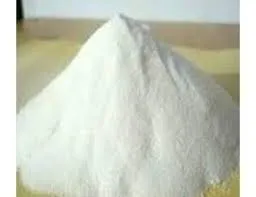
სექ . 25, 2024 02:12 Back to list
Solubility of HPMC in Cold Water Under Various Conditions
The Solubility of HPMC in Cold Water
Hydroxypropyl Methylcellulose (HPMC) is a synthetic polymer derived from cellulose, a natural polymer found in plant cell walls. It is widely used in various industries, particularly in pharmaceuticals, food, construction, and cosmetics. One of the key attributes of HPMC is its solubility in cold water, which has significant implications for its applications.
HPMC has a unique structure that allows it to dissolve in water, creating a viscous solution. This property is especially important in the pharmaceutical industry, where HPMC is utilized as a binder and thickening agent in tablets and powders. When pharmaceutical formulations require a cold-water soluble binder, HPMC is often the material of choice due to its ability to provide palatability and stability without the need for heat.
The solubility of HPMC in cold water can be attributed to its chemical composition. The hydroxypropyl and methyl groups attached to the cellulose backbone impart hydrophilicity, allowing the polymer to interact favorably with water molecules. When HPMC is added to cold water, it begins to swell, and upon continuous stirring, it gradually dissolves to form a colloidal solution. This process occurs without requiring elevated temperatures, making HPMC particularly useful in applications where heat-sensitive ingredients are involved.
In the food industry, HPMC serves as a thickening agent, emulsifier, and stabilizer. It is often found in gluten-free products and sauces, offering improved texture and consistency. The ability to dissolve in cold water allows food manufacturers to incorporate HPMC without compromising the quality of heat-sensitive components. This characteristic has made HPMC an essential ingredient in many formulations aimed at enhancing mouthfeel and overall product stability.
hpmc solubility in cold water

Another application of HPMC in cold water conditions is in construction. It serves as a vital additive in cement and plaster mixtures, improving workability and water retention. For example, when added to tile adhesives, HPMC enhances adhesion while allowing for extended open times. The solubility of HPMC in cold water facilitates the mixing process, ensuring that builders can prepare their materials quickly and efficiently without the need for hot water.
In the cosmetics industry, HPMC is employed in various personal care products, such as creams, lotions, and gels. Its ability to dissolve in cold water makes it an effective thickening agent, providing a desirable consistency without compromising the integrity of sensitive ingredients.
Despite its numerous advantages, the solubility of HPMC in cold water can exhibit variability based on factors such as molecular weight and degree of substitution. Different grades of HPMC have been developed to cater to various applications, offering a range of solubility characteristics.
In conclusion, the solubility of Hydroxypropyl Methylcellulose in cold water plays a pivotal role across multiple industries. Its effectiveness as a binder, thickening agent, and stabilizer makes it indispensable in pharmaceuticals, food, construction, and cosmetics. As research continues to explore and expand the applications of HPMC, its importance in product formulation and development will undoubtedly grow, ensuring its place as a versatile polymer in modern manufacturing.
-
Unlocking the Benefits of HPMC Products: A Gateway to Versatile Applications
NewsAug.07,2025
-
Tile Bonding Cellulose: The Key to Superior Adhesion and Durability
NewsAug.07,2025
-
Hydroxypropyl Methylcellulose Powder: The Versatile Component in Modern Pharmaceuticals
NewsAug.07,2025
-
Hydroxyethyl Cellulose: The Versatile Solution for Various Industries
NewsAug.07,2025
-
Hydroxyethyl Cellulose (HEC): The Versatile Polymer for Various Applications
NewsAug.07,2025
-
The Ultimate Guide to Mortar Bonding Agent
NewsAug.06,2025







